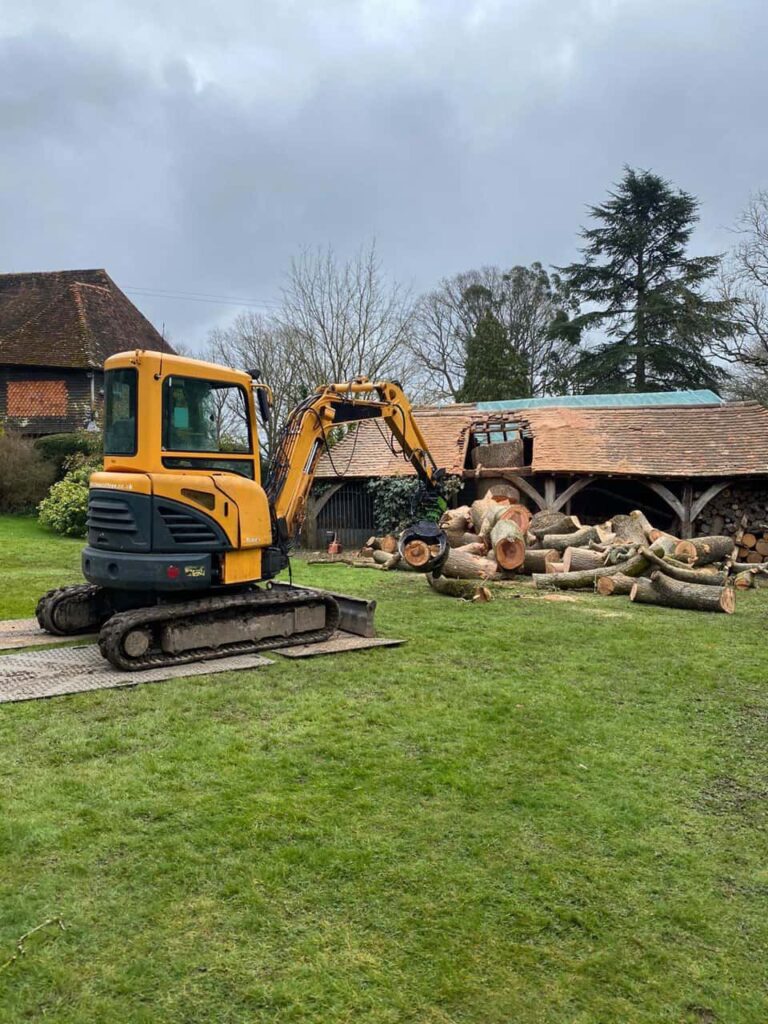Introduction: Tree pruning is a vital aspect of arboriculture that involves selectively removing branches and foliage to improve a tree’s health, appearance, and safety. When done correctly, pruning can enhance a tree’s structural integrity and beauty while minimising the risk of disease and storm damage. In this blog post, presented by Newmarket Tree Surgeons, we will explore the art of tree pruning, including techniques and essential tools for a successful pruning process.
1. The Importance of Proper Pruning
Proper tree pruning serves several essential purposes:
- Health Maintenance: Pruning removes dead or diseased branches, promoting overall tree health by preventing the spread of diseases and fungi.
- Enhanced Aesthetics: Pruning can shape a tree to improve its visual appeal, making it more attractive in a landscape.
- Safety: Removing weak, overhanging, or hazardous branches reduces the risk of property damage and personal injury during storms.
- Improved Light and Airflow: Pruning can open up the canopy, allowing more sunlight and airflow, which benefits the tree and surrounding vegetation.
2. Key Techniques for Tree Pruning
a. Crown Cleaning: This involves the removal of dead, diseased, or weak branches from the tree’s canopy to maintain its health and structural integrity.
b. Crown Thinning: Thinning the crown involves selectively removing branches within the canopy to reduce density, improving light penetration and airflow.
c. Crown Reduction: Reducing the size of the tree’s canopy by pruning specific branches is done to minimise the risk of storm damage or interference with nearby structures.
d. Crown Raising: Raising the crown involves removing lower branches to provide clearance for structures, pedestrians, or vehicles.
e. Directional Pruning: Guiding the growth of young trees by pruning to encourage strong, desirable branching patterns.
3. Essential Pruning Tools
a. Hand Pruners: These are small, handheld tools for cutting branches up to 1 inch in diameter. There are two types: bypass pruners for clean cuts and anvil pruners for thicker branches.
b. Loppers: Loppers have long handles and are suitable for cutting branches up to 2 inches in diameter. They provide extra leverage for easier cutting.
c. Pole Pruners: Pole pruners have an extendable handle with a cutting head at the end for reaching high branches. They are ideal for safe and precise pruning from the ground.
d. Pruning Saws: Pruning saws are designed for cutting larger branches. They come in various shapes and sizes, including folding and curved-blade saws for different cutting situations.
e. Chainsaws: For professional tree surgeons, chainsaws are essential for large pruning tasks. Proper training and safety equipment are crucial when using chainsaws.
Conclusion: Tree pruning is an art that requires a deep understanding of tree biology, techniques, and the right tools. When done correctly, it promotes tree health, safety, and aesthetics. However, improper pruning can cause significant harm to a tree. Therefore, consulting with experienced arborists or tree surgeons like Newmarket Tree Surgeons is essential when planning and executing tree pruning. With the right techniques and tools, you can ensure your trees thrive and remain beautiful additions to your landscape for years.
Call us on: 01638 591 692
Click here to find out more about Newmarket Tree Surgeons
Click here to complete our contact form and see how we can help with your tree’s needs.

